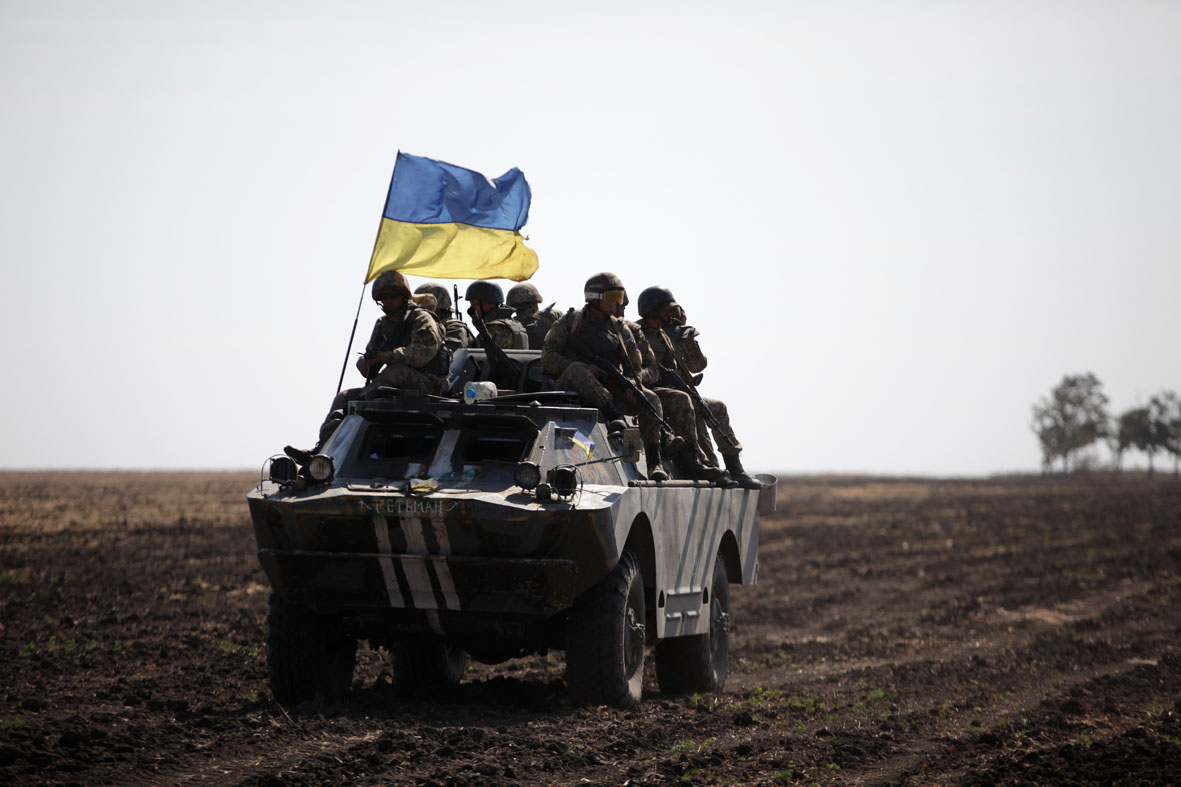4th Annual CSPS Symposium on International Security
September 24, 2021
Panel 1: “Tools: Identifying the New Technologies being Integrated into Defense Capabilities”
PANELISTS
Changing Concepts/Definitions of War and the Challenge of New Technologies – Forrest Hare
Dr. Forrest Hare is a cyber operations solutions developer at SAIC and adjunct professor at George Mason University. Prior to his retirement, he served 28 years in the U.S. Air Force and had assignments in targeting, signals intelligence, information operations, and cybersecurity policy. He earned a PhD in public policy from George Mason University,
Bio Technologies – Stephanie Rogers, acting assistant director for biotechnology at the Office of the Undersecretary of Defense for Research and Engineering
Dr. Stephanie Rogers is the acting assistant director for biotechnology at the Office of the Under Secretary of Defense for Research Engineering. She previously served as vice president of IQT Labs Operations and Bioinformatics and vice president and deputy director of B. Next at In-Q-Tel. She holds a PhD in plant pathology from Oklahoma State University.
Evolving Debates about Cyber as a new form of Warfare – Mark Montgomery, Cyber Solarium
Mark Montgomery is the executive director of the Cyberspace Solarium Commission. He previously served as policy director at the Senate Armed Services Committee under the late Senator John McCain. He served in the U.S. Navy for 32 years as a nuclear trained surface warfare officer before retiring in 2017 as rear admiral.
Moderator: Forrest Hare, GMU and SAIC
SUMMARY: (PDF VERSION)
Dr. Forrest Hare opened the panel with remarks regarding technology’s revolutionary impact on the nature of warfare. Key examples illustrate this point over time, from the introduction of nuclear weapons to the development of space capabilities to the dawn of the internet age and the challenges of cyberspace.
Cyberspace has changed the nature of warfare in two important ways: First, cyberspace has democratized access to powerful technology. Critical technological capabilities, once available exclusively to rich and powerful nations, are now ubiquitous. Second, Cyberspace has itself become a domain of conflict.
Dr. Stephanie Rogers and Biotechnologies
Rogers opened with two general points. First, she highlighted ways in which the Department of Defense may utilize biotechnology to better execute its mission; second, she underscored obstacles that undermine US biotechnological superiority.
Biotechnology is an engineering discipline that uses living things to bolster the production of food, tools, and textiles. The Department of Defense seeks to apply biotechnology to augment the warfighter’s capabilities. For example, Dr. Rogers outlined how biotechnology can enable servicemembers stationed in forward operating bases to produce their own food, thus reducing the burden on the supply chain. Other applications include enhancing thermal technology, developing cutting-edge medicines, and increasing access to potable water.
Dr. Rogers outlined four issues that undermine US biotechnological competitiveness. First, the difficulty in retaining, training, and recruiting an effective workforce—from PHDs to those with trade skills. Second, overcoming infrastructure difficulties. US laboratories are well -resourced and highly effective; however, the US manufacturing base is lacking (a reality made clear by the COVID-19 supply chain problems). Third, derisking investment to better engage private industry. Fourth, protecting technology from intellectual property theft, thus preserving the US advantage.
China’s five-year plan includes large investments in biotechnology. Those who lead the bio revolution will hold a critical advantage. In the words of Dr. Rogers, “it will take an all-of-nation approach.”
Mark Montgomery and Cyber as the new form of warfare
Montgomery illustrated how cyber may be better integrated into a broad deterrence strategy. It’s clear that the US must do a better job defending in cyberspace. The US responses to cyberattacks are generally slow and mute, particularly with respect to attacks that are below the threshold that would generate a military response. The US economy, for example, lost roughly one trillion dollars in potential GDP over the course of a decade due to intellectual property theft, but the US government does not respond to this as a form of warfare.
Two factors explain the slow US response: first, adversaries have become experts in “grey zone” operations (operating just below the threshold that would provoke a kinetic US response); second, democracies by their nature struggle to counter grey zone warfare. As autocrats authorize grey zone operations, democratic leaders must attain a higher threshold of consensus to respond. Democratic systems require a level of consensus that autocracies do not. The dangers are clear. Failing to counter cyberwarfare puts critical medical, informational, and electoral infrastructure at risk.
Current US cyber deterrence is not working, but Montgomery outlined a three-part strategy that can:
- First, we must defend ourselves. Banks generally have the strongest, best-resourced cyber security, but local and state governments suffer from outdated systems and a chronic lack of funding. Policymakers must figure out how to increase the cyber budget for these underfunded entities. To achieve these ends we must better organize the cyber security complex, which includes raising funds for the Cyber Infrastructure Security Agency; we must also build better system resiliency so victims can more quickly rebound.
- Second, we must increase cooperation between the public and private sectors. Roughly 85 percent of critical infrastructure is owned by private industry or local government. One recommendation is to elevate the cyber security ecosystem, helping all stakeholders.
- Third, we must leverage law enforcement, economic, military, and diplomatic tools to impose greater costs on attackers. This includes working with international partners to promote norms in cyberspace.
Noah Zoroya, CSPS Student Fellow, MA candidate in International Security
Panel 2: “Tasks: Coordinating Across the National Security Community”
PANELISTS
Framing the Technology Policy Challenges for the President – Barry Pavel, Atlantic Council
Barry Pavel is senior vice president and director of the Snowcroft Center for Strategy and Security at the Atlantic Council. He has held numerous high level U.S. government executive branch positions related to national security, most recently as special assistant to the president and senior director for defense policy and strategy on the National Security Council.
Dr. Paolo Costa is an associate professor of cyber security at George Mason University’s Volgenau School of Engineering, co-director of Mason’s Radio and Radar Engineering Lab, and director for International Collaborations at the Center of Excellence in C4I&Cyber. He previously served as a fighter pilot in the Brazilian Air Force.
Dual Use and Low Technologies: Policy Concerns – TX Hammes, NDU INSS
Dr. Thomas X. Hammes is a distinguished research fellow at the National Defense University’s Institute for National Strategic Studies. He has published three books and over 160 articles on international security issues. He served for thirty years in U.S. Marine Corps and received his doctorate in modern history from Oxford University.
Moderator: Ellen Laipson, Director, CSPS
SUMMARY: (PDF VERSION)
Moderator Ellen Laipson began the discussion asking the panelists and audience to think about the academic, policymaking, and military communities as parts of a broader ecosystem affecting and affected by technological change. How do technologies migrate from the military to the civilian and private sectors, or vice versa? And who sets the policy guidelines? Why and how do technology issues related to the future battlefield reach the president’s desk for decisions?
Barry Pavel, Director of the Scowcroft Center at the Atlantic Council, drawing on his experience in the strategic planning in the Defense Department, characterized the current situation as “the cusp of the beginning of the digital age,” with tectonic shifts in technology fundamentally altering the social and political landscape of the 21st century. The revolution in biotechnology set to take shape in the 2030s “will make the communications revolution so far look very tame.”
These fundamental changes will leave policymakers struggling to create conceptual frameworks for understanding the new applications of technology and their relations to politics and policy choices, as was the case after the nuclear revolution in the 1950s. Pavel pointed out the inseparability of technological issues from other political arenas: “it permeates everything,” he noted. He argued that coordinating operations across the national government, private sector, and allied and partner states will be critical if the US is to protect its interests and effectively wield its power on the international stage.
Dr. Paolo Costa, Director of George Mason University’s leading research centers: the Center of Excellence in Command, Control, Communications, Computers, Intelligence, and Cyber (C4I and Cyber), provided an overview of the Center’s work and described a few of its projects most pertinent to the future of warfare. The C4I and Cyber Center runs a multitude of projects for federal agencies, US military services, and private corporations to provide interdisciplinary understanding of technology at the systems level.
- Star Tides aims to build resilience at the community level against natural disasters.
- Battle Management Language is an effort to formalize and standardize command intent such that military orders can be accurately issued and interpreted across language barriers with the help of computer programs.
- ARAKNID seeks to create a tool that provides mission commanders with a decision aid to facilitate the tasking and retasking of military assets across organizational boundaries.
- Finally, the Cybersecurity Manufacturing Innovation Institute (CyManII), a project for DOE that includes over twenty-five universities and three national laboratories, is attempting to secure digitalized manufacturing processes and mitigate the risk of cyberattacks to facilitate the digitalization of industry.
Dr. T. X. Hammes, retired Marine general and currently on the faculty at the National Defense University, focused on the the most effective procurement strategies for the uniformed military services. The offense/defense balance has shifted decisively to the defense in an era of pervasive surveillance and autonomous, long-range, precision systems. Considering these trends, Hammes argued that military branches should field “small, smart, and many” weapons platforms instead of the “few and exquisite” legacy platforms that continue to be procured. Underlying this logic is the principle of efficiency and tradeoffs; governments risk the defeat of large, expensive systems by more numerous and cost-effective systems in the hands of adversaries. Bureaucratic and political obstacles, Hammes posited, stand in the way of action on this issue.
During the question-and-answer period, Professor Laipson raised issues of integration of effort within the US government and in alliance or partner relationships.
- Pavel pointed to the challenges posed by hypersonic missiles that only allies can ameliorate: namely, that early detection in allied territories could drastically improve our ability to prepare for and respond to any potential hypersonic missiles launched at US territory.
- Both Dr. Hammes and Dr. Costa noted that a key area where the US suffers in its technological competition is immigration policy. Dr. Hammes described the relative closedness of US immigration for STEM students and lack of pathways to permanent residence for students and recent graduates as “suicidal,” while Dr. Costa drew on personal experiences in Canada meeting international students who felt like the US was not a viable option for education, long-term employment, or both.
Finally, the panelists discussed the Indo-Pacific region through a technological lens. Dr. Hammes highlighted the geographical difficulties for European states trying to engage in the region, but also touched on the important roles for European allies and partners in the development of artificial intelligence and effective management of soft power resources. Mr. Pavel broadened the group’s perspective by labeling China as a global power, no longer confined to regional ambitions, adducing its patchwork of military installations, domestic influence networks, and intelligence capabilities. Dr. Costa extended this looked to South America and Africa particularly, where Chinese companies supply a large portion of technological products to various states. All in all, the discussion served to spur critical thinking about the opportunities, challenges, and potential developments related to technology policy in the American context and the competitive, global environment in which the US government must implement these policies.
Connor Monie, CSPS Student Fellow, PhD candidate in Political Science
Panel 3: “Organization: Investing in People and Institutions”
PANELISTS
Innovation in the Military: An Historical Perspective – Michael Hunzeker, GMU
Dr. Michael Hunzeker is an assistant professor of political science at George Mason University’s Schar School of Policy and Government, as well as the associate director of the Center for Security Policy Studies. His research focuses on wartime learning and military innovation. He received a PhD from Princeton University and served in the U.S. Marine Corps from 2000-2006.
Ethical Issues – Cortney Weinbaum, RAND Corporation
Cortney Weinbaum is a senior management scientist at the RAND Corporation. Her research has focused on the impact of emerging technologies on intelligence, countering weapons of mass destruction, special operations, and space architecture She began her career as an intelligence officer, where she led two teams that received the Director of National Intelligence’s Meritorious Unit Citation.
Institutional Challenges within DOD and the Inter-Agency – Dan Gerstein, RAND Corporation
Dr. Daniel Gerstein is a senior policy researcher at the RAND Corporation. He previously served as undersecretary (acting) and deputy undersecretary in the Department of Homeland Security Science and Technology Directorate. He served in the U.S. Army and received a PhD from George Mason University.
Moderator: Ben Fernandes, GMU
SUMMARY: (PDF VERSION)
Leading the discussion, Professor Michael Hunzeker spoke on his recent publication Dying to Learn: Wartime Lessons from the Western Front. Victory or defeat does not turn on the ability to see revolutionary potential in revolutionary technology. Rather, it is our adaptive learning capabilities we need to prepare. World War I provides a good example of wartime learning we can learn from today, considering this conflict occurred within a multipolar system, followed a prolonged period of peace, and followed a period of rapid exogenous technological change. Further, three fundamental lessons can be derived: there is a best way to organize fighting forces to learn as quickly as possible, we need to review our existing analytical mechanisms, and we shouldn’t be too complacent in trust in frontline commanders – we need the ability to let adaptations occur on battlefields.
Cortney Weinbaum presented on her work on Artificial Intelligence and how to develop a policy framework to address the ethical challenges that are emerging. She described the ten general principles that underline ethical considerations for new scientific research and innovation: beneficence, informed consent, non-exploitation, privacy and confidentiality, non-discrimination, conflict of interest, professional competence, integrity, professional discipline, and duty to society.
Not every principle applies to every field of research.The final principle, duty to society, poses the question: is the subject of research something that should exist in society? Weinbaum went on to note that codes of conduct formulated around these principles are generally considered “soft law”.
Weinbaum presented a potential pyramid framework for an AI code of conduct regarding the military use of AI. At the base of this framework was the business functions and foundational layer, which would focus on guidelines for identifying, removing, and mitigating bias in operational use of AI. The next level, non-lethal military uses of AI, would provide guidelines for tradecraft transparency, human-in-the-loop versus human-on-the-loop, and audits for accuracy. The top level, lethal uses of AI, would include an oversight body, mechanisms for lethal activities, and measures of effectiveness for non-kinetic strikes.
Daniel Gerstein focused on how the Department of Defense institutions need to do some fresh thinking about technology development. The industrial age research enterprise is failing in creating 21st century enterprises. The US will need to reexamine/revamp innovation systems to remain competitive globally, and new approaches are required.
Over sixty years have passed since the last major redesign of the US science and technology enterprise. Further, U.S. research and development expenditure ratio to GDP has gone from 12% in the 1960’s to less than 3% 2019.
Gerstein concluded that traditional approaches to technology development from the last century continue to dominate in the defense establishment. His recommendations to benefit technology development and innovation included:
- streamlining the current research and development enterprise;
- recognizing the DoD’s reliance on academia, industry, and allies;
- avoiding the Henry Ford Problem (not sure asking operator is as important as showing the scientist and engineer);
- thinking orthogonally to identify innovative solutions.
Kimberly Talley, CSPS Fellow, MA Candidate in International Security



